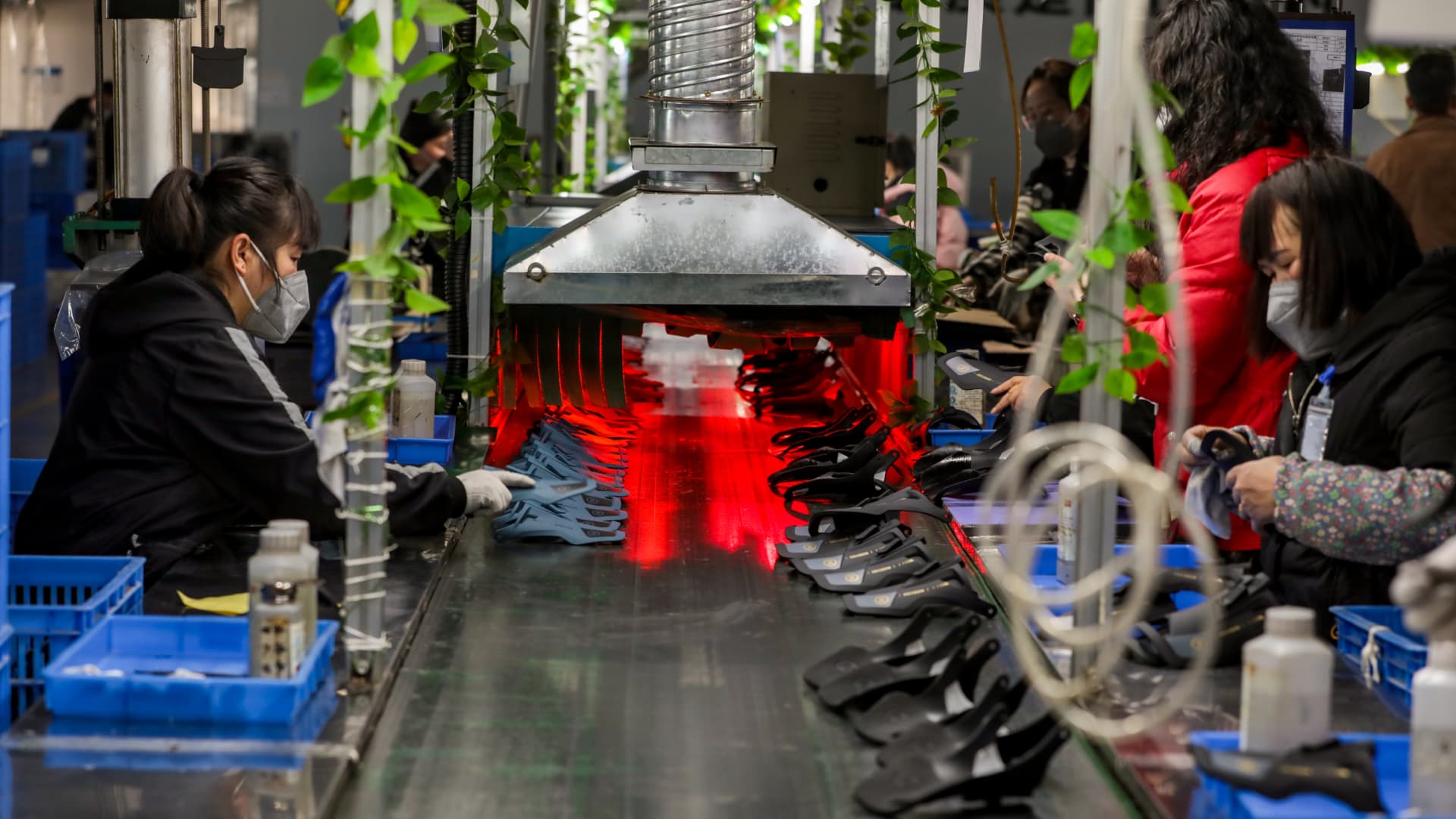China News Service | China News Service | Getty Images
The Trump administration’s trade truce with China that paused the steepest tariffs on Chinese goods isn’t offering much of a reprieve to many importers. Stacking of multiple tariff layers already implemented during the trade war has pushed up costs to import retail goods much higher than the 30% associated with the tentative agreement.
“While companies are relieved to see a temporary pause from the incredibly high tariffs on goods from China, retailers are still facing very high tariffs that will have an impact on prices and supply,” said Josh Teitelbaum, senior counsel of Akin.
“Multiple layers of tariffs are a big problem for basic items like kids backpacks that come largely from China,” said Dan Anthony, president at Trade Partnership Worldwide. “You’re talking about rates of over 70%,” he said.
That includes the layering of existing 17.6% tariffs and Section 301 tariffs (related to unfair trade practices) of 25%, with the 30% in tariffs on Chinese goods not included in the pause — 20% fentanyl-related tariffs and 10% reciprocal tariffs.
Walmart CFO John David Rainey said in a CNBC interview after its earnings this week that prices of goods including food, toys, and electronics may increase due to tariffs. “We’re trying to navigate this the best that we can,” he said in the CNBC interview. “But this is a little bit unprecedented in terms of the speed and magnitude in which the price increases are coming,” he added.
Panjiva data shows from January 2025 to May 12, Walmart’s top three countries where shipments originate from are China (34.1%), followed by India (26.3%), and Hong Kong (10.6%).
For many importers, the true tariff tax on Chinese goods now ranges from 40% to 70%.
Teitelbaum offered footwear as an example, with a children’s or women’s sneaker that has a leather upper facing a 40% tariff if imported from China today, factoring in the “most favored nation” standard tariff under WTO rules of 10%, plus the 30% in fentanyl and reciprocal tariffs.
That stacking of tariffs pushes the true cost for many other retail goods much higher than 30%, including:
- Cotton sweaters from China face a 46.5% tariff (16.5% most favored nation plus the fentanyl and reciprocal tariffs).
- Women’s bathing suits from China face a tariff of 54.9% (24.9% most favored nation plus the fentanyl and reciprocal tariffs).
- Baby’s dresses from China face a tariff of 41.5% (11.5% most favored nation plus the fentanyl and reciprocal tariffs).
Matt Priest, president & CEO of the Footwear Distributors & Retailers of America, told CNBC that a 40% tariff on the most popular category of imported women’s and children’s leather footwear is simply unsustainable for American families and footwear companies.
“These are everyday shoes — not luxury items — and applying compounded tariffs on them only drives up costs at the cash register,” said Priest. “With nearly $650 million worth of these shoes imported from China last year, it’s clear this policy disproportionately impacts working-class consumers. It’s time for a serious, bipartisan conversation about tariff reform that puts American families first.”

This stacking of tariffs has led some small businesses to cut product lines as a way to mitigate the financial strain. Anjali Bhargava, founder of spice company Anjali’s Cup, says her company will be discontinuing products as the special vacuum seal tins she uses sell out.
Even before the 30% tariffs hit, she was paying 25% in tariffs. “These tins were already more expensive than I could afford, but even if I could absorb the 30% tariff, as a small business owner handling so much on my own, I can’t afford the added stress of uncertainty about how the story might change during the months it would take to produce and ship the tins,” Bhargava said. “The past few months have been so destabilizing,” she added.
Bhargava said it is critical to maximize the potential of the working capital she has available and minimize unnecessary risks, given how expensive debt has become. Bhargava’s line of credit increased in interest rate to 23%, plus 2% to pull the money.
“My credit card interest rates are all in the high 20s so interest is a huge issue and ordering tins five to six months before I can sell them has been a big bottleneck,” Bhargava said. “I used what I could to buy the ingredients and packaging that are essential for those products and now I have to focus on building a stronger foundation for the company with those.”
Rick Woldenberg, CEO of Learning Resources, a family-owned company that makes educational toys and is suing the Trump administration over the tariffs — a hearing scheduled for May 27 — is only facing the 30% tariffs, but he said the jump from zero to 30% is steep. Even if the pause does put his company in a position of importing some items again, it comes at a high price.
“A 30% duty rate, when we used to pay zero, is a massive change in costs and will force a large price increase to cover it,” said Woldenberg. “I believe this tax is highly inflationary. We don’t like the idea of participating in driving up inflation, so we are hardly rejoicing over the news.”

He said a book of finished goods and work in progress in China that was part of production orders due in the 45-60 days after Trump’s April 2 global tariffs announcement will likely be imported from Chinese factory partners. “We now can and probably should relieve them of this inventory and try to sell it here. We will selectively restart production of particularly sensitive products, for various reasons, but resourcing continues and our migration away from China remains active,” Woldenberg said.
The small business owners all say the tariffs have taken a toll on the business and their trust in the process.
“We still don’t know what our costs are or will be, and assume that future decisions by this administration will be last minute, without advance notice and cause us further pain and disruption. We have no confidence looking forward,” Woldenberg said.
Rick Muskat, president of family-owned shoe retailer Deer Stags, which imports its goods from China and sells in major retailers including Macy’s, Kohl’s, JCPenney, and on Amazon, said even with the lowering of the Chinese tariffs, the stacking of all existing tariffs has increased exponentially.
“Even at the ‘reduced’ level this will cause serious cashflow problems,” said Muskat. “We were paying $60,000 per month. Now we are paying $360,000 per month. We have to cut expenses to cover this and find savings in payroll. It will also require us to raise prices for future deliveries,” he said.
“The damage of the past weeks cannot be undone and can only be addressed with some sort of longer term assurances and stability that enable us to make the best decisions on how to spend our money today, next week and next month, and set ourselves up for success in the future,” Bhargava said. “I will survive and I’m pretty optimistic that the business will too, but the stress to figure it out has been rough and has taken a toll on me. I’ve needed to really slow down and not panic, but I’m finding my way, step by step.”





